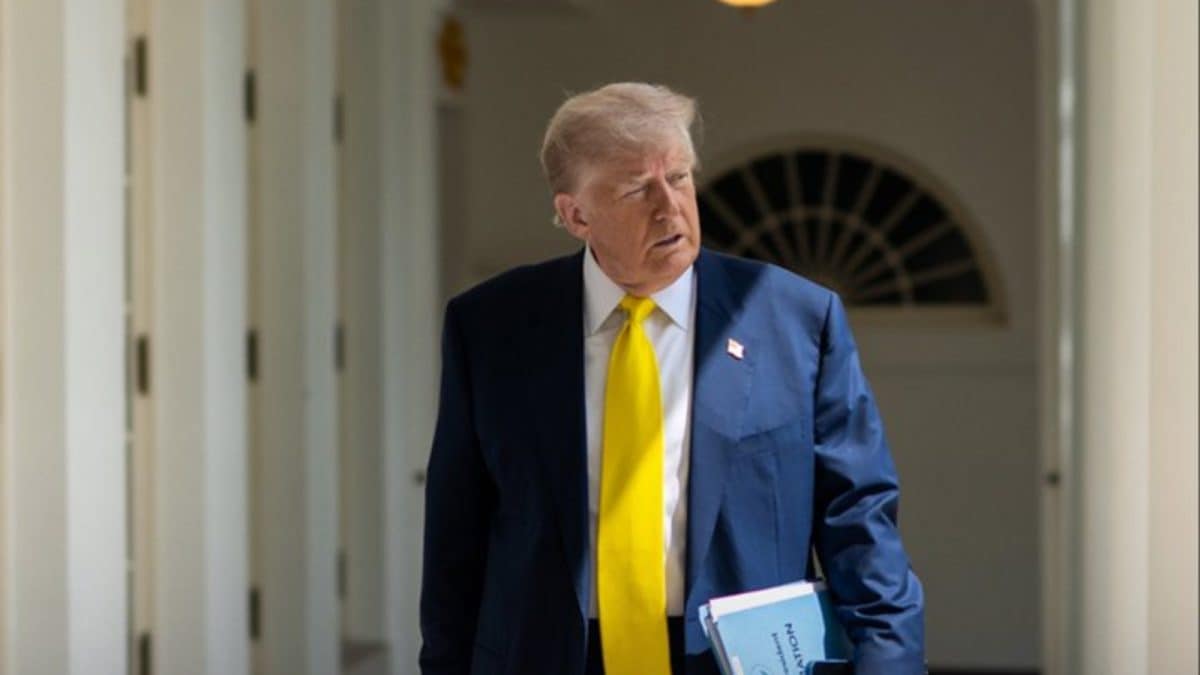ARTICLE AD BOX
On the freezing ridge of Rezang La, November 18, 1962, 118 men, mostly Ahirs, of Charlie Company faced thousands of Chinese soldiers. Cut off, outnumbered, and forsaken, they chose valour over survival

The Rezang La War Memorial honours the bravery of soldiers during the 1962 battle.
Farhan Akhtar’s film ‘120 Bahadur’ has reignited national conversation around the legendary Battle of Rezang La, where nearly all the defenders were Ahir soldiers from Haryana’s heartland and fell fighting in 1962.
As the movie brings these historic sacrifices to a new audience, it has also sparked protests from the Ahir community, who feel that their specific identity and contribution are not given enough recognition in the film’s title or its messaging.
This is the second film on the heroic last stand of the Indians guarding Rezang La. It was earlier immortalised by Chetan Anand’s cult classic Haqeeqat.
But, what exactly happened at Rezang La in 1962? This is the story of the brave men who died with their hands frozen on triggers, and hearts pierced by bayonets.
THE ENEMY IS COMING
November 18, 1962. It was 3:00 AM. Icy winds howled across Rezang La, a massive feature watching Ladakh’s Chushul Valley from a height of nearly 5200 metres.
Through the misty haze, Lance Naik Hukum Singh, leading a four-men listening post (LP), saw the faint silver glimmer of bayonets. The men could see shadows moving—dozens, then hundreds—ghostly figures advancing in waves towards the ridge. The Chinese were coming.
THE FORWARD POLICY
Since 1961, beneath the serene Himalayas, a dangerous game of 'chicken' was underway. India, by 1961, was fed up with Chinese incursions across Ladakh. There were reports of a Chinese road linking Sinkiang and Tibet, cutting through Indian territory.
The solution? Nehru’s “Forward Policy.” It was a daring gamble: confront the Chinese, establish tiny military posts right in their face, and claim the contested ground.
Indian jawans, often freezing in isolated bunkers, were commanded to hold the frontier, pushing relentlessly into areas like the Galwan Valley.
The Chinese kept up a facade of diplomacy, highlighted by their “Hindi-Cheeni bhai-bhai” slogan. But behind the diplomatic cloak, China was sharpening its dagger.
On October 20, 1962, the simmering tension ignited. Beijing, with a swift and overwhelming blitz, smashed the Indian forward posts, sending the entire frontier spiraling into all-out war.
By mid-November, India had fallen back to Leh, the capital of Ladakh, prepared to defend it to the last man. At the core of the defence was Rezang La, the final, critical barrier protecting the vital Chushul Valley—the key gateway to Leh.
THE CHARLIE COMPANY
The task of stopping the Chinese from breaching Rezang La fell upon Charlie 'C' Company of the 13 Kumaon Regiment.
Commander Shaitan Singh Bhati, a towering Rajput from Jodhpur, had meagre resources—117 men, most of them Ahir jawans from Haryana, armed with little more than rifles, mortars, unyielding grit, and raw courage.
On November 18, 1962, just before dawn, the earth shook as thousands of Chinese troops, backed by heavy mortars, launched their assault.
Perched inside their listening post, Hukum Singh’s men LP promptly conveyed the message to the Charlie Company.
Sepoy Bharat Singh advised Hukam Singh that they should withdraw, since the LP had carried out its task of giving early warning.
But, Hukam Singh replied: “Jitni dair tak dushman ko rokenge aur marenge, utna hi mokka company ko kamyabi ka milega–the longer we delay and cause casualties to the enemy, the better the chances of success for the company.” (The Saga of Ladakh: Maj General Jagjit Singh.)
FOUR VS FOUR HUNDRED
The four men tightened their grips on their rifles. The temperature had plummeted below minus 25 degrees, but in their veins burned a fire stronger than the cold. They had been awake all night—alert, waiting, listening to the mountain’s whispers. Now, the mountain had spoken.
The Chinese advanced in disciplined silence, their silhouettes etched against the faint moonlight. Hukum Singh’s eyes glinted behind the rim of his helmet. “Fire!” he ordered, and their guns roared to life, shattering the night’s stillness.
From the valley below, the first Chinese ranks crumpled, caught utterly by surprise. Their officers screamed orders. Flares burst overhead, washing the snowfields in pale red light. The tranquil peaks of Rezang La became a cauldron of sound—rifle fire, grenade detonations, and the desperate war cries of men defending every inch of their homeland.
And so the four men held on to their post till three of them fell and one–shot in the legs–was captured. As Kavi Pradeep was to write, and Lata Mangeshkar was to sing later: “Dus-dus ko ek ne maara.”
THE BATTLE OF REZANG LA
Inside the main defences, Major Shaitan Singh heard the gunfire erupt and stood tall in his trench. He knew those bursts—his forward posts were refusing to withdraw.
For a brief moment, pride glowed in his eyes. “My boys will hold,” he said quietly, almost to himself.
Within minutes, the enemy turned its fury on the Indian lines. Mortar shells whistled through the air, crashing into the snow-laden slopes. The Chinese attacked from three directions, attempting to encircle Charlie Company. But every assault was met with a hail of bullets and thunderous defiance.
LARTE RAHO–NAAM UNCHA RAHEGA
The Chinese had by now moved to the flanks, and were circling the platoons guarding Rezang La.
“No 7 platoon, commanded by Naib Subedar Surja was attacked by approximately 400 Chinese from the left flank. The platoon commander called for the fire of 3-inch mortars. Their fire landed smack in the midst of the first echelon of about 130 Chinese, inflicting heavy casualties.
But the enemy pressed the attack, unmindful of losses. At one stage some Ahirs fought with bare hands! Two jawans charged a medium machinegun position but were killed within 2 feet of it. One burly Ahir lifted a Chinaman and threw him down the Rezang La rocks to his death. A splinter hit Naib Subedar Surja on the head. "Larte raho! 13 Kumaon ka nam uncha rakho!" (Keep fighting and glorify the name of 13 Kumaon), were his last words. And fight they did till the very end. No mercy was sought nor any given,” writes Singh.
THE LEGEND OF SHAITAN SINGH
Amid heavy shelling, Major Singh moved between platoon posts to reorganise defenses, sustain morale, and direct fire against the advancing waves of the enemy. Even after being severely wounded by a machine gun burst, he refused evacuation, ordering his men to leave him to save themselves and continue the fight. “Tell the battalion how well the company fought,” were his last words.
Three months later his body was found exactly in the same place where he was left, preserved in snow and history. For his supreme courage, exemplary leadership, and ultimate sacrifice, Major Shaitan Singh was posthumously awarded the Param Vir Chakra, India's highest wartime gallantry decoration.
THE LAST STAND
Major Singh’s men fought till the last man. Out of the 118 brave soldiers, 106 died with their hands on triggers and heads on bayonets. Five were taken prisoners, of them one died. Only four managed to return alive, to tell the story of rare courage.
“When later, in 1963, the bodies of the brave Indian soldiers were recovered from Rezang La most men were found still holding on to their weapons. Each one of them had multiple wounds from bullets and shell splinters. Many had been bayoneted to death,” writes Singh.
The Chinese, blown away by mortars and machine guns that continued to blaze till the last breath, suffered heavy casualties – some estimates put the number at 500.
By 8 AM the battle of Rezang La was over. But in five hours, the Charlie Company of 13 Kumaon had left a legacy of bravery that continues to inspire India, and its soldiers.
- Ends
Published By:
Priya Pareek
Published On:
Oct 27, 2025

 2 hours ago
5
2 hours ago
5









 English (US) ·
English (US) ·